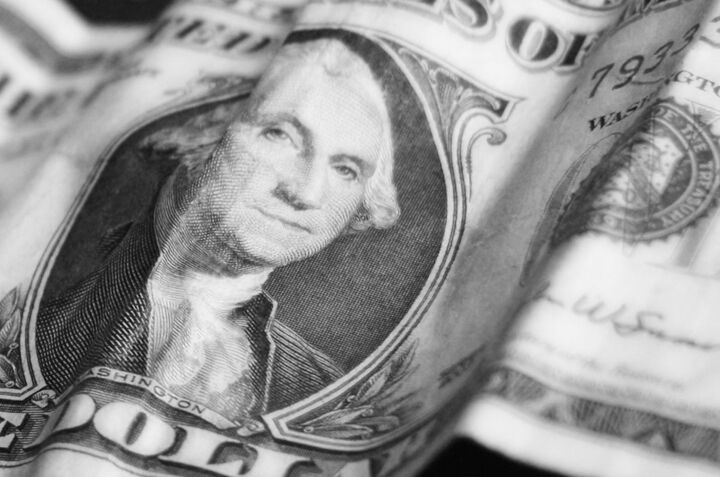
Dollar Continues to Plummet
The dollar’s international value fell further this week, provoking a myriad of explanations from economists. As of Monday, the Federal Reserve’s trade-weighted dollar exchange index had plunged to its lowest point since its creation 34 years ago.
Today, the euro briefly touched $1.383, a new all-time high against the dollar. The pound hit $2.05, the highest level in 26 years.
Yesterday, the Chinese yuan set a new record against the dollar at 7.5629 yuan to the dollar.
This week, the Canadian, New Zealand and Australian dollars have hit 30-, 22- and 18-year highs respectively. Some analysts predict that the Canadian dollar may exceed the U.S. dollar value by the end of the year.
Gold now trades at $672.50 per ounce, up from a low of $260 in 2000. Silver now costs $13.16, up from the $4 per ounce it traded at in 2001.
Against commodities, the dollar has faired poorly too. Copper, zinc, lead, oil, uranium, corn and soybeans, have all risen over the past couple years.
While the dollar continues to drop, economists around the world are grasping at theories to explain why.
According to Reuters, the dollar is “lick[ing] its wounds” due to problems in the sub-prime mortgage industry (July 17). USA Today blames dollar woes largely on “differences in long-term interest rates” between currencies, while United Press International says rising crude oil prices are really to blame.
But as the media continues to report daily dollar action theories, almost every outlet avoids discussing the significant long-term structural problems within the U.S. economy.
Firstly, in an effort to keep the economy from stalling, the Federal Reserve is inflating the money supply at an exorbitant rate. Measured by M3, the dollar supply is increasing at an annualized rate of 13.7 percent, the fastest in 30 years. The U.S. economy certainly isn’t growing at double-digit rates, and as the money supply increases beyond demand, the dollar becomes worth less.
Secondly, dollar demand is drying up. America’s trading partners are rolling in excess U.S. dollars. The massive trade deficit (in which more money is spent purchasing foreign goods than vice versa) has sent trillions of dollars into foreign hands, particularly in Asia. Recent moves to diversify foreign exchange holdings indicate that these foreign nations have reached the limit to which they are willing to hold dollars. Asian countries outside of China have by and large stopped saving dollars and are now spending them. Even China has indicated that it too will soon begin spending its massive dollar horde.
Besides reckless money supply growth and worsening trade deficits, America also has become a land of debtors.
The world’s largest creditor nation at the time the dollar was adopted as the world’s reserve currency, America is now the world’s largest debtor nation. Official total public debt has ballooned by more than 50 percent since 2000 (the debt was already considered huge then), to a current $8.8 trillion. When Medicare and Social Security liabilities are included, governmental debt is estimated to be in the range of $50 trillion. The entire U.S. economy itself equals a paltry $13 trillion in comparison. Current tax revenue is much smaller.
Private, state and municipal debt is also ballooning.
The question of how those debts are to be paid without massively higher taxes or widespread social turmoil gets to the heart of the dollar problem.
Monetary and political authorities have shown the path they have chosen to take—the path of dollar devaluation. Expanding the money supply and subsequently devaluing the dollar may help pay off those debts, but the potential cost could be enormous.
The dollar’s current weakness could be the early stages of a run on the dollar in which foreign nations dump their dollar holdings before they become worth less.
How bad could it get for the dollar?
“Over the next few years a 50 percent markdown in the value of the dollar seems like a ‘best case’ scenario,” says Peter Schiff, ceo and chief global strategist at Euro Pacific Capital, Inc.
In the past, some have labeled Schiff as “Dr. Doom” for his view on America’s economic outlook. But the dollar’s continuing descent seems to be bearing out his concerns.
According to Schiff, America’s prosperity is a result of the work of previous generations. He warns, “Past glory can get in the way of accepting present realities. The economy of the United States … is fighting a losing battle against trade and financial imbalances that are growing daily and are caused by dislocations too fundamental to reverse.” Schiff says the dollar’s day of reckoning isn’t just coming, it’s “already overdue.”
For more information on why the dollar will continue to fall over the long term, read “Why the U.S. Dollar Constantly Loses Value.” For more information on what to do about it, read “Storm-Proof Your Financial House.”
